

Helios-40-2 85mm f1.5 lens Review
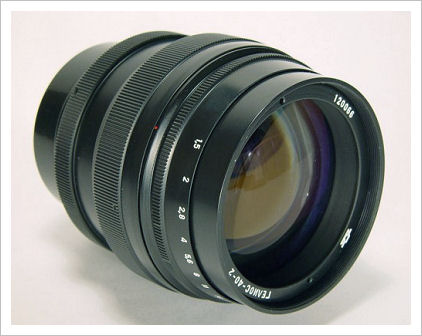
Helios-40-2 85mm f1.5 lens. 2013 version
What's a Helios-40-2 you may well ask, and why should I be interested in it?
Well, to start with "Helios" is the brand name of a line of lenses, often sold with Russian "Zenit" cameras. They were/are made in the Krasnogorsk Mechanical Works (abbreviated as KMZ) near Moscow. The Helios model 40 lens is an 85mm f1.5 which is reported to be based on the Carl Zeiss Biotar design, which is basically a double Gauss lens. Double Gauss lenses have been used since the 1930s for fast semi-wide to short-telephoto lenses. The optical design of the Helios-40-2 (the -2 simply refers to the lens in a M42 mount rather than the original M39) is shown below:
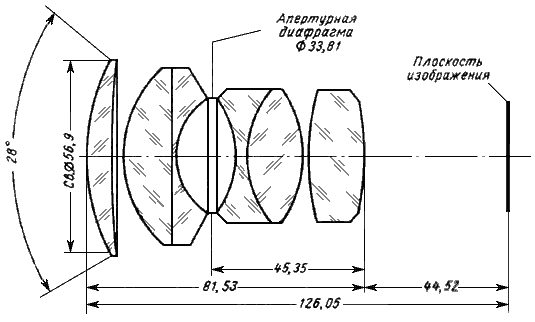
The production dates of the Helios-40 and Helios-40-2 are a little tricky to nail down, but they were certainly made from the mid 1950s to the early 1990s. Things got a little turbulent in Russia as the Soviet Union dissolved in 1992... The lenses made during that period had a built in tripod mount. The M39 mount -40 version seems to have been made with a "silver" finish while the -40-2 version was available in black.
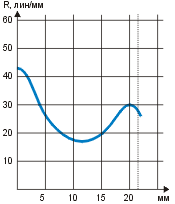
Over the years the Helios-40(-2) has developed something of a cult following. It's not a sharp lens, especially when used wide open. The published MTF/resolution(?) curve shows an odd dip with the region about 10-12mm from the center of the frame being the softest The numbers aren't impressive either with a quoted center/edge resolution of 36/17 lp/mm. It's not a very convenient lens since it's fairly large and built like a tank (actually probably more like a hand grenade). It also uses a rather awkward pre-set stop down metering system with two aperture setting rings at the front of the lens and a rather narrow focusing ring near the back. It goes without saying that it's manual focus of course. In recent years it has also gotten quite expensive. 20 year ago you could probably pick up a used example for $50 or less, but more recently they have been selling for around $500 or more.
.jpg)
In this configuration, though there's a red dot next to f5.6 and a white dot lines up with f5.6 and the red dot, the lens is actually set to f1.5, Confused? Keep on reading...
Why, you may ask, would someone pay $500 for a used lens that's big, heavy, inconvenient to use and not very sharp? Well, it has this "Bokeh" thing. Shot wide open and with the right amount of defocus on the background, the background appears to "swirl" around the subject. Why it does this I'll speculate on later, but it's for this effect that the lens has been sought after.
In 2012, the KMZ factory announced that they were going to put the lens back into production, and they have. By all appearances it seems to be the same lens design they used in the 1950s, the only difference being that the new lenses don't have a tripod mount. Everything else seems to be the same. The mount is still M42, so it's very easy to adapt to any EOS DSLR. It's a bit trickier for Nikon shooters since a purely mechanical adapter won't give you infinity focus and an adapter with glass which allows infinity focus alters the optics a bit, so +1 for Canon here! The question is does it still have the famous "swirly Bokeh" effect. The short answer is yes, but read on for more details.
For those who have never used a pre-set stop down lens, the aperture control may be somewhat confusing. Basically there are two aperture rings. The first one has click stops at f1.5, f2, f2.8, f4, f5.6, f8, f11, f16 and f22. Now you might think this controls the aperture, but you'd be wrong. The second aperture ring actually controls the aperture and it has no click stops. If you want to shoot at f4, you set the first ring to the click stop at f4. Then to focus (wide open) you rotate the second aperture ring all the way to the right. At this position the lens is at f1.5. Then, when you want to shoot, you rotate the second aperture ring all the way to the left and it will hit the stop with the aperture at the pre-set f4. It gets even more confusing though. with the first aperture ring set to f4, there's a red dot by the f4 and when the second ring is rotated fully to the right, the white dot on the second aperture ring lines up with the f4 marking and the white dot. However you are now at f1.5, not at f4! When you rotate the aperture ring all the way to the left, the white dot on the second aperture ring lines up with a red dot at f1.5. However you're not at f1.5, you're at f4. Confusing? I've seen people claim that their lens has the aperture marks backwards. They're not, they're just a bit confusing. When the white dot is lined up with the red dot all the way on the right means that the aperture is the same as the red dot next to the aperture scale. It's obvious isn't it?
Helios-40-2 85mm f1.5 - Optics
Vignetting
Vignetting actually isn't all that much more than most fast 85mm lenses. I measured approximately two stop of light falloff in the corners of the full frame with the lens wide open at f1.5. On an image shot with a Canon APS-C sensor the corners were just over 2/3 stop darker than the center. Vignetting reduces as the lens is stopped down and isn't really an issue past about f2.8.
Distortion
Distortion is very well controlled. None was really visible and my attempts to measure some put it at maybe 0.1% or less. Can't grumble much about that.
Chromatic aberration
Again quite good. It's hard to see any with the lens wide open due to the poor resolution and astigmatism in the corners and the subsequent softness of the image. Stopped down it's detectable but certainly not an issue.
Sharpness
This is where "so far, so good" comes to an end as far as conventional standards go. Wide open the center isn't bad (assuming you can hit focus manually) but the corners and edges are very soft. As the lens is stopped down there's a noticeable improvement with each stop until you get to about f5.6-f8 where center sharpness peaks and rates as very good. Corners reach "acceptable" by around f5.6 but continue to get better as you stop down to f11 at which point they're approaching the sharpness of the center. Best overall performance is at f8, though the edges sharpen up a little more at f11 at the cost a slight sharpness drop in the center.
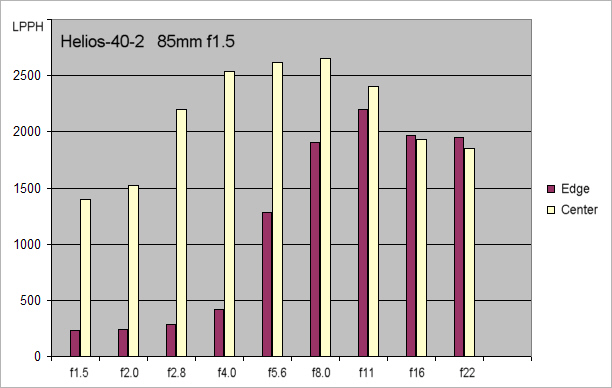
The above plot was obtained with the Helios 40-2 on an EOS 6D. It shows center and edge resolution in terms of LPPH (lines per picture height) at an MTF of 0.5. If you want this in terms of line pairs/mm, 2500 LPPH for the 6D corresponds to around 52 lp/mm. As you can see, the Helios-40 is quite sharp if you stop it down enough, but wide open and even at f4 the edges are much softer than the center. In a portrait lens this isn't always a problem and in fact can be an advantage if you want to focus attention on the center of the image. Note that these numbers were obtained from a single sample of the lens. How good the quality control on these lenses is and how representative these data are of an "average" sample I don't know.
Bokeh
Now we get to the heart of the matter. The only real reason to own this lens is the bokeh when shot wide open for portraits. If you're shooting portraits the soft corners don't matter (in fact they may be desirable). Likewise the vignetting serves to emphasize the subject in the middle of the frame.
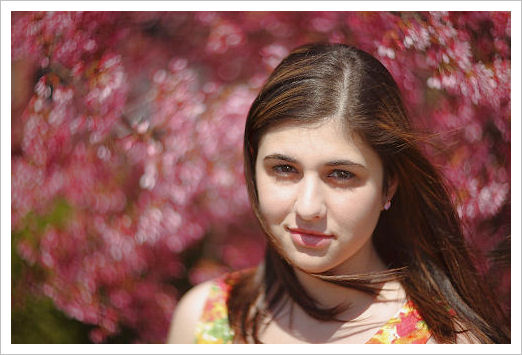
Helios-40-2 85mm f1.5 at f1.5 on EOS 5D - see the "swirl"
Given the right sort of background (basically something with structure like leaves on a tree or flowers) at the right distance from the subject (not too close and not too far) the background appears to "swirl" about the center of the frame. Putting your subject "bull's eye" in the center of the frame is normally not a recommended portrait composition, but with this lens it can be a good idea to do so. First it puts the subject in the sharpest part of the frame and second it allows the swirl to be centered on the subject. You can always crop later.
.jpg)
Helios-40-2 85mm f1.5 at f1.5 on EOS 5D - note lack of "swirl"
If the background doesn't have much structure then the "swirl" won't be noticeable. If the background is thrown WAY out of focus then you won't see the "swirl" structure. So it's not there all the time on every shot. However you'll learn though experience what will give this effect and what won't. A "head and shoulders" portrait with the background maybe 3-6ft behind the subject works well. For a full length portrait, the background can be further away. What you want are the highlight points in the background mildly blurred but not so blurred that they all overlap and blend together.
So it looks like the new, 2013 version of the Helios-40-2 retains the "look" of the original lens. They haven't messed with ("improved") it.
Examples and Comparisons
First lets take a look at two shots. The first taken with the Helios-40-2 at f1.5:

Helios-40-2 85mm f1.5 at f1.5 on EOS 5D. Note "swirly" bokeh
And the second is a shot taken with the Canon EF 85/1.8 USM at f1.8:

Canon EF 85/1.8 at f1.8 on EOS 5D
The difference is obvious i think. Both show about the same degree of background blurring, but while the Canon background is smooth and conveys no sense of motion, the background of the Helios-40-2 shot shows a distinct pattern as if it was swirling around the center.
Getting a little more technical, here are two shots of the same subject (a regular array of points). These images have been very heavily processed and enhanced to show the shapes of the out of focus points. However the processing only affects the density and contrast, not the shape. First here's the shot with the Helios-40-2 at f1.5:
.jpg)
Helios-40-2 85mm f1.5, defocused at f1.5 (on EOS 5D)
Ideally all the points would appear as (out of focus) circles, but quite clearly they don't. Away from the center they take on a lenticular (lens-like) appearance. They are thinner in the radial direction (a line joining them with the center of the image) and longer at right angles to such a line. This they appear to "circle" the center of the image. This is the "swirl".
Now here's a similarly processed shot of the same subject with the same degree of defocus shot with the Canon EF 85/1.8 at f1.8
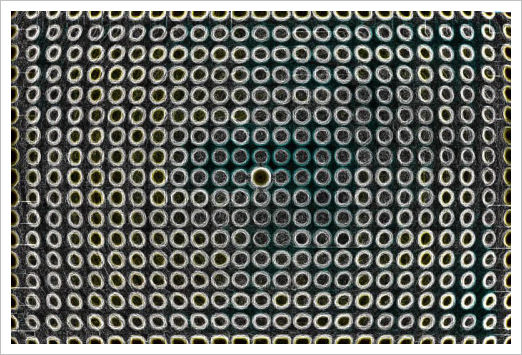
Canon EF 85/1.8 at f1.8, defocused on EOS 5D
You can see something of a similar effect, but it's less pronounced and it's confined much more to the extreme edges and corners of the image. There's no real sensation of anything "swirling" around the center of the frame.
So what causes this? Well, I don't know for sure. Some of it is due to physical vignetting of the lens aperture when it's wide open. That's well know to give rise to "lenticular" rather than round out offfocus highlights towards the corners of the frame when shooting wide open with fast lenses. However I don't think that can be the whole story. The Helios-40-2 is noticeably astigmatic in the focus place. Radial lines (from center to edge) are brought into sharper focus than meridional lines. That means if you took a shot of a wheel, the spokes would be in better focus then the rim. Such an effect could give rise to this swirling pattern via a mechanism in which the degree of defocus in the radial direction was different from the degree of defocus in the meridional direction.
Why you get the swirl doesn't really matter of course. You get it. If you like the effect then it's desirable. Obviously since this lens has been sought after for this unique effect, there are photographers who like it a lot. I guess it's somewhat similar in principle to those who like the Lensbaby line of lenses, though their out of focus effects are qualitatively different (see below). See also my Lensbaby Composer and Optics Kit Review
.jpg)
Shot with Lensbaby Single Optic lens on EOS 5D
Helios-40-2 85mm f1.5 - Conclusions
Well, any normal lens costing $500 that gave sharpness numbers like the Helios-40-2 does wide open wouldn't get a very good review. Wide open it's a bit soft in the center and dissolves into dark astogmatic mush in the corners of a full frame image. It does sharpen up as you stop down and past around f5.6 the center is good and even the corners start to become acceptable, but that's faint praise. At f5.6 and smaller apertures just about any lens should have acceptable image quality - and if you're looking for good image quality at f5.6 there are cheaper and much more convenient options.
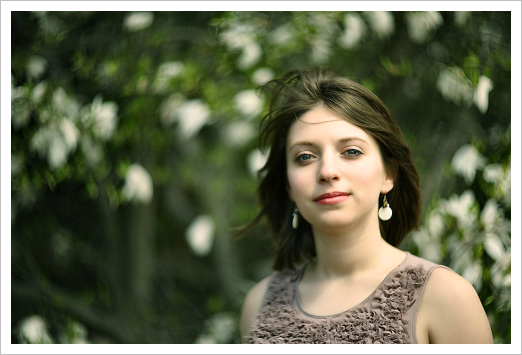
Helios 40-2 @ f1.5 on EOS 5D. The background "swirl" is again evident
However you can't judge a cult lens on the basis of numbers. People don't seek out this lens because it's sharp. Rather the opposite in fact. They seek it out because it isn't sharp across the frame and it can give a unique look to portraits via the "swirly" bokeh effect. Whether or not you like that look may be a matter of taste, but it certainly can yield images that probably couldn't be obtained with any other lens. If you like the look, this is the lens you want. You'll be shooting it wide open most of the time to get the look you want, so the awkward aperture control won't bother you much. New lenses are available through Amazon.com for around $400 (06/15). You might find a used one on eBay for less, but it will be at least 20 years old, maybe almost 60 years old. Then you have to worry about things like dust, scratches, fungus, wear and so on. With a new lens you pretty much know what you are getting.
There Helios-40-2 85mm f1.5 is available through Amazon.com
Alternatives
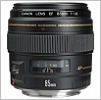 If you don't like the look you are lucky because you can save a little money! If you want a sharp, fast, 85mm portrait lens that will autofocus, has automatic aperture control, silent focus with full time manual override, look no further than the Canon EF 85/1.8 USM. It's a very good lens indeed and right now with the Canon rebate is available for only $359. A bargain if ever there was one.
If you don't like the look you are lucky because you can save a little money! If you want a sharp, fast, 85mm portrait lens that will autofocus, has automatic aperture control, silent focus with full time manual override, look no further than the Canon EF 85/1.8 USM. It's a very good lens indeed and right now with the Canon rebate is available for only $359. A bargain if ever there was one.
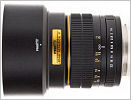 If you want sharp, yet you still don't want to "go mainstream", there's the Pro Optic 85mm f1.4 manual focus, manual aperture lens that I reviewed here recently. Not quite as sharp as the Canon, but faster and able to give slightly more background blur when shot wide open. If you don't need AF and auto aperture and you like the "old school" feel of manual focus, it's an excellent buy and it's $100 or so cheaper than the Canon lens. It won't give you "swirly bokeh" though!
If you want sharp, yet you still don't want to "go mainstream", there's the Pro Optic 85mm f1.4 manual focus, manual aperture lens that I reviewed here recently. Not quite as sharp as the Canon, but faster and able to give slightly more background blur when shot wide open. If you don't need AF and auto aperture and you like the "old school" feel of manual focus, it's an excellent buy and it's $100 or so cheaper than the Canon lens. It won't give you "swirly bokeh" though!
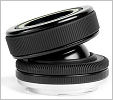 If you want even more extreme bokeh, which can be controlled both in magnitude and direction and you don't mind a slower lens, there's always the Lensbaby line. Though not fast optics, they can throw the background (or edges) out of focus just by their varying sharpness across the field rather than through any shallow depth of field mechanism. Again the "Lensbaby Look" is not something that appeals to everyone, but those who like it often seem to really love it. They can't duplicate the "swirly" bokeh of the Helios-40 though.
If you want even more extreme bokeh, which can be controlled both in magnitude and direction and you don't mind a slower lens, there's always the Lensbaby line. Though not fast optics, they can throw the background (or edges) out of focus just by their varying sharpness across the field rather than through any shallow depth of field mechanism. Again the "Lensbaby Look" is not something that appeals to everyone, but those who like it often seem to really love it. They can't duplicate the "swirly" bokeh of the Helios-40 though.
